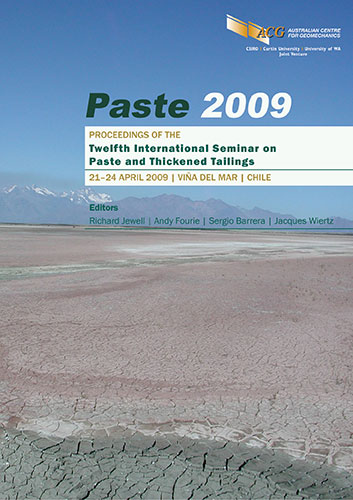Design and Operation of the Kupol Project Counter-Current Decantation Circuit Using Deep Cone Thickeners

|
Authors: Schoenbrunn, F; Rajala, J; McCleary, C |
DOI https://doi.org/10.36487/ACG_repo/963_9
Cite As:
Schoenbrunn, F, Rajala, J & McCleary, C 2009, 'Design and Operation of the Kupol Project Counter-Current Decantation Circuit Using Deep Cone Thickeners', in R Jewell, AB Fourie, S Barrera & J Wiertz (eds), Paste 2009: Proceedings of the Twelfth International Seminar on Paste and Thickened Tailings, Australian Centre for Geomechanics, Perth, pp. 77-84, https://doi.org/10.36487/ACG_repo/963_9
Abstract:
Kinross Gold’s Kupol Mine elected to use deep cone thickeners for their counter-current decantation (CCD) circuit as well as the grind thickener. Deep cone thickeners are commonly used for CCD circuits in the alumina industry, but this is the first application of that technology outside of alumina. The project started with process testing and proceeded through design, construction and startup. The circuit design incorporated both mechanical and process challenges. Using deep cone thickening allowed the CCD circuit to be installed indoors which was necessary in the arctic environment at Kupol. The deep cone thickener (DCT) performance allowed the CCD circuit to be reduced from six thickeners to five while maintaining the desired recovery. Some of the circuit features include partial pumping of overflow, maintenance access considerations, underflow pumping via centrifugal pumps and shear thinning, interstage mixing, and flocculant dilution design. Data from startup will be included.
© Copyright 2025, Australian Centre for Geomechanics (ACG), The University of Western Australia. All rights reserved.
View copyright/legal information
Please direct any queries or error reports to repository-acg@uwa.edu.au
View copyright/legal information
Please direct any queries or error reports to repository-acg@uwa.edu.au